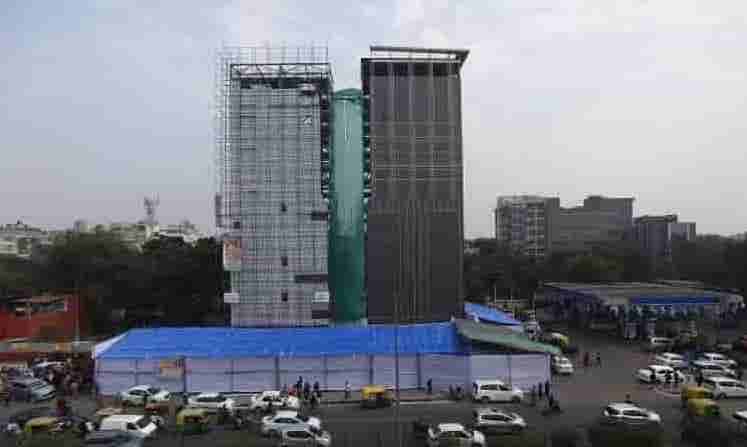The Collapse of India’s First Automated Parking Lot
On 2nd November 2021, the collapse of India’s first automated parking lot made the headlines.
In November 2020, the South Delhi Municipal Corporation (SMDC) unveiled New Delhi’s first fully-automated parking facility in Green Park. The parking structure once consisted of four towers of 17 levels each that cost a whopping Rs. 18.2 crores to build. At present, only two of the four towers are available for public use and can accommodate 136 cars at a time.
This ambitious project provided the citizens of Delhi with a much-needed respite from parking woes for a year. Unfortunately, on 2nd November 2021, four parking platforms in one of the towers collapsed. This accident damaged two cars and left several vehicles trapped in the tower.
The SMDC assured citizens that this incident was caused due to a technical issue. However, it’s undoubtedly also a case of negligence and points to a deeper issue regarding the management of parking lots.
The response of authorities and citizens
In light of this incident, the Delhi Police registered an FIR under IPC Section 336 (Act Endangering Life or Personal Safety of Others) and Section 427 (Mischief Causing Damage) and initiated a probe.
Although no one was injured, this incident did not inspire confidence in citizens. Some even reported that they are now hesitant to leave their expensive cars in automated facilities since the collapse. This is how poor management of automated parking facilities can prevent citizens from enjoying its benefits.
A key observation after the collapse
Automated parking lots are constructed in a way that discourages human presence and interference in parking spaces. Once a driver parks their vehicle at the ground level, a lift takes it to a vacant slot and loads it onto a parking platform.
Since there is hardly any human presence, multi-storied automated parking lots have relatively low activity levels, which is why these facilities are at risk for breakdowns going unnoticed for long periods of time. If left unchecked for prolonged periods, they can become safety hazards, which seems to be the case here.
In light of this collapse, the SMDC has announced that it will conduct a safety audit of all automated parking facilities around New Delhi.
Why is there such neglect behind multi-storied parking?
Civic bodies try to provide off-street parking solutions that create more parking spaces for citizens. Sadly, in multiple Indian cities, these efforts haven’t taken off. Many multi-level parking lots remain under-used, while the streets are full of chaos and congestion. So, why are these projects that cost crores of rupees often lie defunct? Investigations point to poor management.
Multi-level parking projects by the government are often handed over to contractors and private companies. Many times, these corporations are inefficient. As a result, parking projects lie rusting and unused. Take the case of Chandigarh’s dysfunctional parking lot. Once a promising project, it has now been rendered unusable due to negligence.
How can smart parking help with poor lot management?
Smart parking can help civic bodies maintain parking facilities better, and here is why. With IoT-based smart parking solutions, there is no heavy reliance on third parties for parking lot management, revenue collection, and pricing.
For example, Chennai is planning on implementing a central smart parking management system. This city-wide system will offer optimally priced on-street parking that allows drivers to make mobile-based payments.
Furthermore, it also aims to revamp existing parking management contracts. Meaning, the city will no longer rent public spaces to private contractors. Instead, parking lot operators will be paid per parking slot at a fixed rate in return for their management services and fee collection.
Therefore, all the revenue would directly go to the city and not the operator. This step will remove the middleman and minimize corruption and negligence.
How can smart parking solve safety issues?
Smart parking solutions can make safety audits more convenient. By installing sensors, it is possible to monitor and manage activities within parking lots over an IoT-based network. Management authorities can track safety issues before they become a hazard.
For example, sensors can indicate which areas of parking lots need repair. They can notify maintenance teams if the lights in a section of the parking lot go off or the CCTV cameras stop working.
To conclude…
The collapse of India’s first automated parking lot points to a larger problem. Despite the chaos it creates, mismanaged and unregulated parking is still rampant across Indian cities. Many citizens view off-street parking as costly, inaccessible, and risky. But, by using smarter alternatives, civic bodies can improve the conditions of multi-level parking facilities in the country. And, with IoT-based centralized systems, citizens can view empty parking slots via mobile apps, park their cars safely, and make easy digital payments.
Smart parking is a win-win for both municipalities and citizens.

